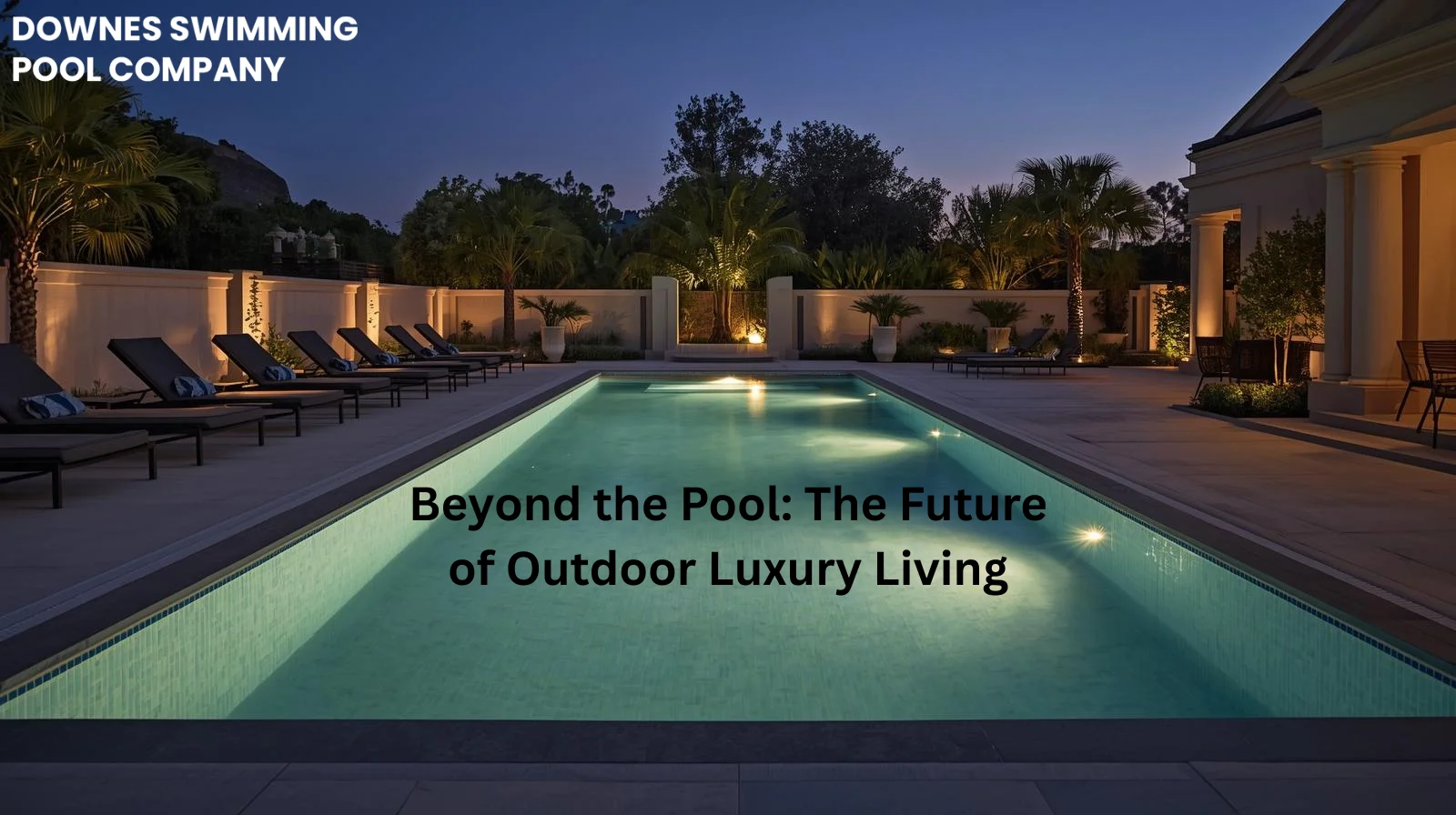A pool is a living statement of design, comfort and personal lifestyle. Across the world, homeowners are reimagining their backyards but not as separate outdoor zones, and at the heart of this transformation is water which reflects calmness. The integrated pool living is where the pool design, nature and technology meets to create experiences and not just spaces.
1. Feature to Focal Point
Pools are not just add-ons; they are not just something that you construct at the back of your house. In the present era, they are the core design anchor of the landscape. A pool’s design should be structured with geometry, color palette, and materials and then build the outdoor architecture around it. To convert features into focal point, consider the following points:
- Visual Anchor: As it reflects the sky, trees and architecture; as it becomes an aesthetic centerpiece even when unused.
- Emotional Core: It sets the tone; calm, energizing or social, as per the design.
- Functional Hub: It connects dining, lounging, fitness and family spaces into a proper tied environment.
2. Design Psychology
Every pool design decision communicates something, hence the design psychology:
- Rectangular and geometric shapes are more towards order, symmetry and modernity; such shapes are perfect for minimalist homes.
- Freeform pools with curves mimic nature and provide resort-like vibes.
- Infinity and zero-edge designs play with perspective; ideal for open views.
3. Material and Finish Choices
The surface finish can shift the entire mood, for instance:
- Pebble finishes create texture and color depth
- Glass tiles reflect light like liquid gemstones
- Light plaster tones give the illusion of Caribbean shallows
The trend is moving toward visual continuity; matching pool materials with exterior flooring or wall cladding to blur boundaries between land and water.
4. Technology and Automation
Technology has revolutionized the way pools are operated, and in today’s world smart systems automate every aspect of pool management. Automated chemical balancing systems maintain water clarity and hygiene. Moreover, Variable-speed pumps save energy while optimizing circulation. In order to create ambiance, LED lighting zones can shift colors for ambience, parties, or safety. Most importantly, Mobile apps and smart assistants now allow control of heating, lighting, jets, and covers from anywhere. Modern automation can reduce energy use by up to 70%, while optimizing water conservation through precise filtration cycles.
5. The Architecture of Experience
Water doesn’t exist in isolation. Hence, the pool designs need to remove physical barriers.
- Floor-to-pool continuity with matching stone or porcelain.
- Disappearing-edge borders that make the pool look infinite.
- Sun shelves, shallow decks, or semi-submerged seating areas for lounging at water level.
6. Lighting and Mood
Night-time design is as important as daytime, and it is often overlooked while designing the pool.
Your Pool is a Reflection of YOU:
A great pool isn’t defined by its size, cost, or depth; it’s defined by how it feels.
It’s where design meets emotion, technology meets experience, it is not just a shape that holds water. It is to build moments, memories; the quiet reflection of evenings and the calm that only water brings. Regardless of your goal, the essence must be timeless; and it must feel right. As the future of outdoor living moves towards a smarter system; sustainable practices and designs healing rather than just impressing. Your pool is your living emotion.






